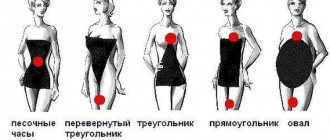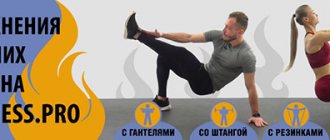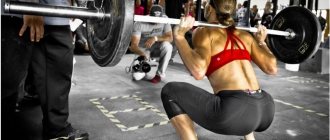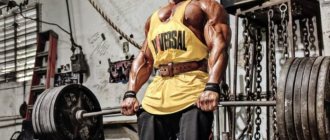Almost every child dreams of learning how to make a wheel correctly. But not all adults manage to do this without prior preparation. Therefore, many come to the conclusion that this is something impracticable and unrealistic. But you can learn to do this gymnastic trick at home and even without professional physical training.
Preparation
High-quality performance of elements of sports acrobatics and gymnastics requires careful preparation. Conventionally, the process can be divided into three stages:
- Psychological mood.
- Choosing a place and clothing for classes.
- Physical preparation for the exercise.
The right attitude is the key to success. The child experiences a subconscious fear of something new. Especially if we are talking about an acrobatic turn upside down. He worries that he will not be able to hold on, that he will fall, hit himself, or feel pain. The second fear is the fear of disappointing your parents or coach by performing an element incorrectly.
The adult’s task is to instill confidence in a successful outcome. It’s worth explaining to the little acrobat that not everything works out right away. To achieve your goals, you need to make an effort and be patient. It is important that the child feels supported and understands that there is a person nearby who can back him up. Tell your child about this, repeat several times if necessary.
Let's move on to choosing a training location. Consider the following parameters:
- the presence of an injury-proof coating, it can be a mat, sports rubber tiles, sand on the beach;
- sufficient space for maneuvers;
- It is desirable to have a wall for support during the learning process;
- an optimal microclimate must be created in the room, it must be ventilated, the optimal temperature is 18–22 degrees Celsius.
Important! Clothing for performing the “Wheel” exercise should be comfortable. One that is too wide or narrow will not work, as it will hinder movement. It is optimal to wear a tight T-shirt and shorts or bicycle shorts.
Before you begin performing acrobatic elements, you need to physically prepare your child.
To do this, train muscles, flexibility, and stretching. Let's take a closer look at the training methods.
Safety regulations
How can you make a wheel without hurting yourself? Many people try to push off with their hands during the exercise. This is absolutely not worth doing, since to create a push you need to weaken the elbow joint. You can find out what will happen during the first exercise while standing against the wall. It is better to warn an assistant before the maneuver to avoid injury.
Many of us tried to do a cartwheel in physical education class as children, but most of us were unsuccessful at this acrobatic element. The wheel is a fairly simple exercise, but due to incorrect execution technique, tightness, unprepared muscles, and fear, not everyone can do it the first time.
In fact, this trick is quite simple, you can learn it in 1 day. It is especially easy for a child to do this rotation using his hands. To do this, he must be properly instructed by an adult who is good at making the wheel himself.
Body Pre-Workout
When performing the wheel, the arms, legs, back, neck, and abs are involved. It is these muscle groups that need to be given attention. Start preparing in stages so as not to overload the child’s body. You can do this at home. The training order is as follows:
- For beginners and preschool children, daily exercise is suitable. It can include simple exercises: regular and plie squats, bending forward, backward, to the sides, circular rotations of the head and torso, lifting the arms and legs, jumping in place, including raising the arms and bending the knees. Stretch in a sitting position: with your legs wide apart, you need to alternately reach your toes with your fingers, while the chin reaches towards the knee. It will be useful for the back to perform an exercise with arching the back; a basket is suitable for girls, and a bridge is suitable for boys.
- Gradually, more complex exercises can be added to regular exercises: “birch” - a stand on the shoulder blades with vertically raised legs, a bicycle, scissors, abdominal pumping, including lateral, push-ups, longitudinal and transverse splits, plank - this exercise trains all muscle groups.
The main condition for success is regular implementation. - When the muscles have become stronger and the joints have become accustomed to the load, you can try to teach the child more complex gymnastic exercises, such as the wheel.
For convenience, you can watch the video tutorial and follow the trainer’s instructions step by step.
Flexibility exercises
Flexibility does not play a particularly important role when making a wheel, but beautiful execution of an element without a certain level of flexibility simply cannot be achieved. Therefore, part of your training should be devoted to exercises for spinal flexibility.
The exercises are very simple, and many are familiar with physical education lessons at school. However, they should not be underestimated, especially for people who are still far from sports activities. And the exercises themselves are as follows:
- Bends while standing. You need to put your feet shoulder-width apart, straighten your shoulders and straighten your back. Do bends in all directions, especially pay attention to bends to the side - after all, when performing a wheel, this is where the body leans.
- Twisting the body. Exercise not only for flexibility, but also to strengthen the back muscles. To do this, you need to stand up straight, tilt your straight body forward, and rotate around your spine to the right and left.
Execution technique
To teach your child how to spin a wheel correctly, let’s look at a description of the technique for doing it. The process of turning forward on your hands consists of the following sequential stages:
- We take the starting position: standing on the floor with legs wide apart, arms spread to the sides, head turned in the direction of movement.
- We accelerate, two or three steps are enough.
- The right hand goes down, the left swings, and the left leg swings in parallel. This sets the impetus for the movement and draws its direction. The swings must be strong.
- We place our right hand on the floor, push off, and place our left hand in line with it. It turns out to be a handstand. The right leg is in a strictly vertical position. The left one deviates to the side to continue the movement.
- The left foot hits the ground first, followed by the right. At the same time, the hands (first the right, then the left) are lifted off the floor. There is a rollover from feet to hands, then back to feet. The exercise can be repeated several times without stopping if desired.
This is a classic version of the element. It is basic for more complex options: a wheel on one hand, a flip without hands, a rotation with one hand can be mastered by a child of 6–7 years old.
Hands-free rollovers are a professional element that can be taught by an experienced trainer. It is impossible to do this in 5 minutes.
Age to start training
We invite you to learn all the intricacies of the exercise and a few secrets in order to achieve perfect performance step by step.
You can learn how to do a “wheel” at almost any age. There are no strict age limits. If the child shows interest, you can start training at 4 years old. It is at this age that the first enrollment in gymnastics groups occurs.
How to determine that a child is ready to learn to do a “wheel”?
Before starting gymnastics, it is recommended to check the condition of the heart, lungs and musculoskeletal system with the help of specialists.
As for the general requirements, it is important that the child has fairly good coordination. Some children are able to master a trick at 3–4 years old, but more often the age of physiological readiness occurs at 5–6 years old.
Before you start training, try inviting your child to do a stand against the wall (safety and holding). If the baby copes with the task and does not fall in the first seconds, then you can start learning.
Possible dangers
Acrobatics (and the “wheel” is an acrobatic element) is a traumatic activity. If safety precautions are not followed, sprains, injuries and bruises may occur.
Under no circumstances should you learn to spin a “wheel” outside on the asphalt or lawn in a park. This is fraught with bruises and injuries. Even if the surface seems soft enough, there may be shards of glass, nails or other dangerous objects in the ground or grass. If a child falls with his full weight on such an object, he may be injured.
The most suitable place for the gymnastic exercise “wheel” is a gym with mats. If you decide to exercise at home, you need to free up space (at least 3 m by 4 m). And also choose a room with linoleum, carpet or laminate, but not tiles, to avoid injury if you fall.
Execution technique
Before learning how to make a “wheel”, you should definitely familiarize your child with its technique:
- Hands are straight and tense all the time.
- Osaka is correct, with a maintained center of gravity.
- The exercise begins with the right hand for a right-hander, and with the left for a left-hander.
- Then the weight is sequentially distributed over 4 points: right leg, right arm, left arm, left leg.
- The body moves forward. The legs are straight during the exercise. This is necessary not only for beauty, but also to maintain balance.
A physically unprepared person, and especially a child, will not be able to do a “cartwheel” on the first try. It is important to gradually move from simple to complex exercises.
How to teach a child - 3 stages
There are several ways to teach a child to do a cartwheel. In professional gymnastics classes, children first do a stand against the wall, and then lower their legs to one side and then to the other. However, by this moment they are already physically well prepared, have strong arms and stretch.
For beginners, there is a sequential complex with increasing load. Training takes place in 3 stages.
You need to move on to the next one only when the previous one is performed without any tension or pain in the muscles. By the way, physically developed children and athletes can complete all stages in 1 day.
And babies may need 2 to 4 weeks to make the transition to the next level.
Prepare your child with comfortable clothes that do not restrict movement (shorts, T-shirt) and non-slip shoes.
Source: https://Razvivashka.online/fizicheskoe/nauchitsya-delat-koleso
How to teach correctly
Let's take a closer look at how to learn how to make a cartwheel for a child quickly and easily. To do this, follow these tips:
- Before performing any exercise, you need to warm up and prepare your body for the stress. It is not enough to do a couple of swings, you need to feel a rush of warmth to the muscles.
- We recommend starting the lesson with a master class on how to perform a coup. Dad, mom or older brother can act as a master. The main condition is to be a worthy example.
- Start your training with a handstand against a wall. Help the baby stand on his hands, his legs should be straight, stretch them along the wall. Let the student feel confident. The stand can be straight or lateral. Do both.
- Then, from the rack, try doing a cartwheel against the wall.
- The next stage is a coup with a partner. The assistant's task is to support the legs during the performance of an acrobatic element. Gradually change the degree of support, first hold your legs in the calf area, then hold them, then just stay nearby as a safety net.
- The last stage is to do the exercise yourself.
Important! The described actions are advisory in nature and do not guarantee that you will complete the exercise yourself. Conduct training taking into account the individual characteristics of the young athlete.
A beautiful wheel is a beautiful wheel
The fact is that you can learn to do this gymnastic element in a very short time in different ways: someone will actually be able to perform it more or less successfully, but most, I’m sure, will have to sweat.
Show someone your “creation,” and many will certainly remain silent about your successes if your training ended this morning. And you can see for yourself what came of it - record yourself on video and evaluate whether your legs are straight, whether you are pulling your toes, whether you are placing your hands correctly and not moving from a straight line to the side. Here is a short list of a beautifully crafted item.
But is it really possible to think about such trifles if you are still unsteady even on your hands (not to mention everything else)? Therefore, my training is somewhat longer than others, but it is of better quality.
How to Avoid Injury
Many people are afraid to do the cartwheel because of the risk of injuring the child. These concerns are valid and steps should be taken to reduce this risk. We recommend paying attention to the following:
- performing acrobatic exercises is contraindicated for children with any injuries, cardiac disorders, brain diseases, or acute diseases;
- choose the location of your classes wisely, eliminate the possibility of collisions with objects and walls, or a strong blow when falling to the floor;
- the wheel can only be done by a physically developed child who regularly plays sports, take time to prepare and do exercises;
- soberly assess whether the child is able to master the technique of the element; you should not teach a child under 5 years old;
- Insure the child until he confidently performs the exercise;
- fear can prevent you from performing a coup correctly, talk about it, make sure your child is confident in himself;
- If you are not confident in your own abilities, do not start self-study, it is better to consult a specialist.
Exercises to increase leg strength
The legs also play an important role when performing the wheel. This is especially felt when exiting the wheel onto your feet - then the weight of your entire body rests on just one leg for a second. And in order not to fall at this moment, you need strong leg muscles.
There are a very large number of different exercises for pumping your legs. But for the wheel it is enough to pump it up in the following ways:
- Regular squats. They pump up the quadriceps very well, and if you squat deeply, they also work out the calves. Ligaments and joints are also strengthened, which will seriously reduce the likelihood of any injuries. To complicate the exercise, you can squat on one leg, or simply with weights.
- Swing your legs. Swings not only increase explosive leg power, but also dynamic stretching. With good lateral stretch, the wheel will look even better. Swings are performed simply: you need to stand at a support, bend slightly towards it and grab it, and swing one leg to the side or back. For the wheel, as you might guess, swinging your legs to the side is best suited.











